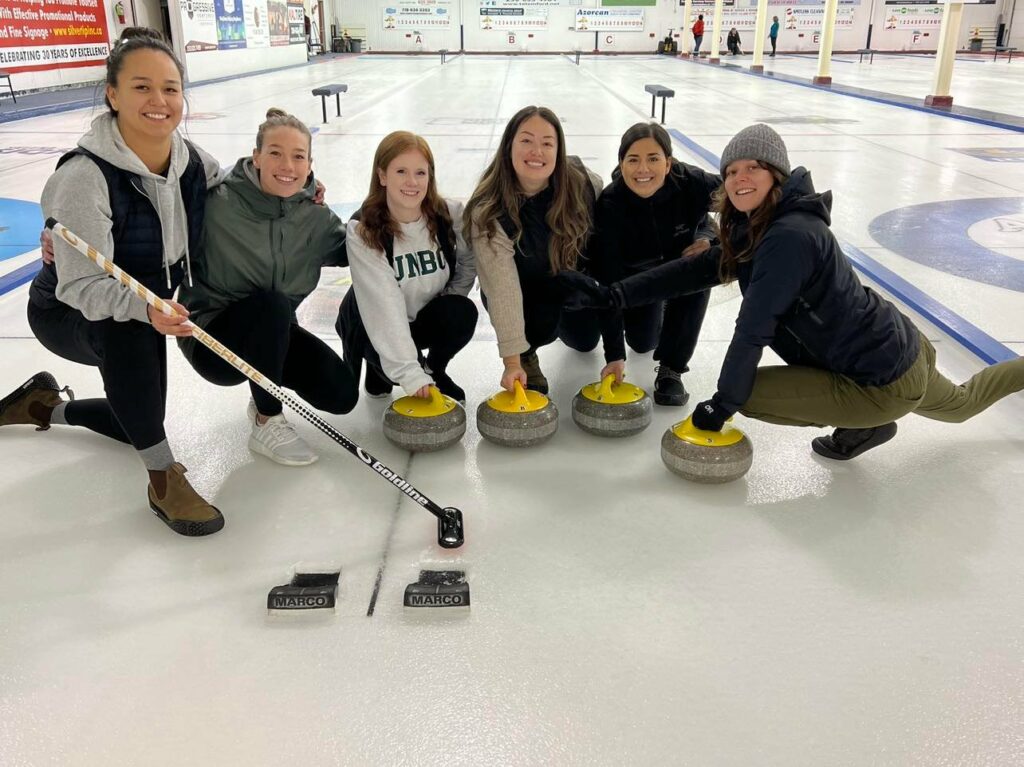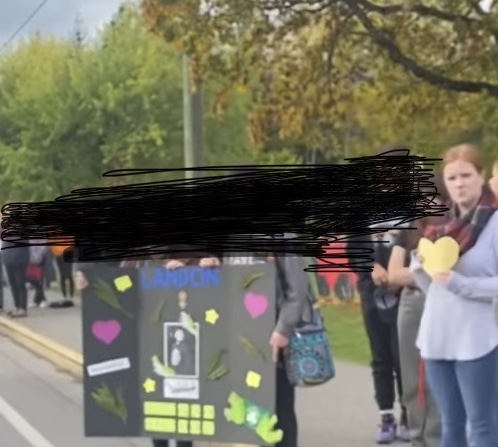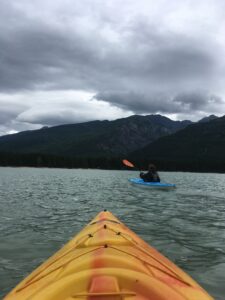BC Professional Standards for Educators
Standard #1: Educators value the success of all students. Educators care for students and act in their best interests.
A classroom environment plays a vital role in student behaviour and attitude towards what is being taught. When designing a classroom floor plan layout, I thoroughly enjoyed taking the time to consider a layout that could benefit diverse learners, provide a sense of equality and safety, and be effective for both independent and collaborative work. This is something that I will adjust and continue to consider within each unique classroom to meet the needs of the classroom behaviours that I currently am teaching.
Standard #2: Educators act ethically and maintain the integrity, credibility and reputation of the profession.
Partaking in a workshop about Professional Boundary Issues was an enlightening experience. I learnt a lot about how to create healthy relationships with my students and how to ethically maintain professionalism in the field. This a document that I will hold onto as I enter the profession and refer to as needed for clarification.
Standard #3: Educators understand and apply knowledge of student growth and development.
This lesson was formatted to meet diverse needs for a kindergarten class. Positive encouragement was implemented throughout to ensure that students could achieve the mechanical/gross motor skill of kicking at least once. Lesson planning was structured to meet the individual needs of all students and allow students of all abilities to find personal success in their Physical Education goals.
Standard #4: Educators value the involvement and support of parents, guardians, families and communities in schools.
To bridge the gap between schools and families, I have been ensuring to provide the parents/guardians with an introductory letter to all households. This provides an openness between myself, the school community, and the parents of my students. Living within a small town, many of the families within my classroom already knew who I was, whether that be from my community connections via dance, daycare work, coaching, volunteering, or my parents also working within the school system as well.
Standard #5: Educators implement effective planning, instruction, assessment and reporting practices to create respectful, inclusive environments for student learning and development.
Within this PowerPoint presentation, I have included my personal ideologies around assessment, and how summative and formative assessment practices can be utilized effectively within classrooms to avoid anxiety and stress for students. This presentation outlines many different personal perspectives that I have on assessment, as well as my personal experience working with children with a variety of IEPs and learning needs, especially those with dyslexia and how assessment impacted their learning experiences.
My personal assessment statement: “Assessment can be fulfilled with the greatest success for the students and their teacher when formative assessment is utilized frequently in a safe and inclusive manner. Ensuring that our students reach their personal full potential, we must focus on social-emotional regulation and learning cohesively with assessment practices.”
Standard #6: Educators demonstrate a broad knowledge base and an understanding of areas they teach.
Formulating a collaborative cross-curricular unit plan deepens a Teacher Candidate’s understanding of the curriculum for a grade level in multiple subject areas. In this specific lesson plan, I was able to collaborate with two other Teacher Candidates and include five different courses, such as Science, Socials, Career Education, Languages, and English Language Arts. Creating this lesson plan was such a fulfilling experience, as I tapped into my knowledge as a Youth Support Worker within the public school system and instilled my experiences working with the Tsimshian Seasonal Rounds. Taking these skills and utilizing them within a professional lesson plan was a very rewarding opportunity to work cohesively with classmates to build an influential lesson that would be engaging and encouraging for all learners.
Standard #7: Educators engage in professional learning.

In October of 2022, several of the Teacher Candidates from this program had the opportunity to attend the Carole Fullerton workshop, entitled “Teaching Mathematics in Elementary Classrooms”. This workshop gave us the chance to work with other teachers in the district, collaborate about different math teaching practices, and lean on one another for new ideas. Carole Fullerton provided us with many tools that we can utilize within classrooms to teach math in a inclusive, engaging, and interactive way to appeal to learners of all abilities.
Standard #8: Educators contribute to the profession.

A big part of the teaching profession is participating in Professional Development days. In November 2022, several of the Teacher Candidates and myself got to partake in a Curling Professional Development workshop focused on Physical Education. This opportunity was provided to us from our Coaching Teachers and schools during the 490 Formative Practicum. Participating in Professional Development allows us to contribute to the profession by furthering our knowledge and experiences to therefore carry into our teaching practices.
Standard #9: Educators respect and value the history of First Nations, Inuit and Métis in Canada and the impact of the past on the present and the future. Educators contribute towards truth, reconciliation and healing. Educators foster a deeper understanding of ways of knowing and being, histories, and cultures of First Nations, Inuit and Métis.
I have been fortunate enough to partake in many examples of implementation of First Peoples Principles of Learning. Using the tools of FPPL in the workplace enables a rich, authentic learning experience for all, as well as ensuring that history is not forgotten, but rather acknowledged to move forward in reconciliation however possible. My work as a First Nations Support Worker in the 2021/22 school year provided me with a great deal of insight into the real-life practices required to ensure that this knowledge is upheld within our schools. (See “Experiences” page for visual demonstrations of my work).

#2: Observation Report 1: October 10, 2021
For our first week of practicum observations in schools, we were asked to focus on the school and classroom culture, and fortunately for myself my peers who attended Mount Elizabeth Middle Secondary School, we have so much to reflect upon regarding this topic. Their school has a wide variety of students, ranging from grade seven to twelve, and therefore have a very diversified school environment. Unlike most schools that I have had the privilege of working in or observing, this school includes the largest range of middle and high school grades that all reside under one roof. It was interesting to see the different temperaments that each grade-level wing of the school had. The grade seven wing was buzzing with energy, none of the lockers had graffiti, there was social groups gathered in all corners talking loudly to one another, each of the students had backpacks a much more tense demeanour to themselves, and the overall vibe within the space was young and light-hearted. In opposition, the grade twelve wing was basically silent, the students were dispersed and chatting quietly amongst themselves, the lockers and walls had graffiti all over them, and the students we saw were confident and unbothered at our entering their area of the school.
The overall atmosphere of the school was incredibly warm and welcoming. Each staff member greeted us, as well as every student that they passed, with a smile and a ‘good morning’. Every adult that we met had offered any help that they could provide and ensured that we felt super comfortable. Their entrance way had a beautiful, positive ambiance to it. They call the entrance the “gathering space”, as it contains a striking, large totem pole right in the middle, mental health awareness pamphlets and resources, and staff standing by the doors for greetings and ensuring that the student sanitize upon entry. There was a general feeling of genuine dedication to Indigenous presence in the school, as they sold Every Child Matters t-shirts, each classroom had some form of Indigenous artwork on their walls, and there was land acknowledgment bulletin boards all around the school. I find that many schools attempt to give this same feeling, but Mount Elizabeth felt deeply genuine. The principal, Christine Byrd, welcomed us into her office immediately upon our arrival, with ready-made Canva handouts for us with a detailed itinerary for our day, went over their school’s COVID-19 safety guidelines, then proceeded to giving us an extensive tour of the entire school (which was so large). I found their middle/high school quite fascinating as it is geographically quite large, as it is capable of fitting approximately 1500 students, but currently only holds around 450. One would think that this would mean that the corridors would feel empty and quiet, but I found that it was much the opposite. The staff and students were all so happy to be in the school environment and surrounded by each other’s support, that there was a general radiance everywhere we went.
At the end of our day, we were invited to stay for their staff meeting. The focus of the staff meeting was “Setting Goals, Knowing Ourselves and Each Other”. They asked each of us to sit dispersed within the tables filled with the experienced teachers and actively participate in their discussions. They went through their general staff meeting agenda, that did not particularly have much relevance to us, but closed the meeting with a collaboration between the people at your table to discuss how teachers can build trust within their classrooms. The teachers at my table said that in order to build trust within your classroom you should: listen to the student’s stories, be people-oriented, live by example, recognize that you are a human-being and acknowledge that you will make mistakes in front of your students, provide routine within your classroom structure, ensure that you are being approachable, reach out when you see a potential red flag, and do not focus too much on product as opposed to the learning process. I found that I gained a lot of knowledge in simply listening to the teachers chat and share their different opinions. My main takeaway from the staff meeting was that everybody’s morale’s climb exceedingly when they have adequate support from their administration staff, as well as when they know that their coworkers are ready and available for teamwork discussions. I gained a lot of knowledge about different teaching styles, how the classroom and school environment greatly impact the mood of the students and the teacher, and how each diverse teaching method can be beneficial for varying reasons. I am very excited to continue this learning journey through practicum and further my understanding of what teaching styles I think would work for myself as an educator, as well as adding teaching techniques that I witness to my personal toolbox for my own practice.
